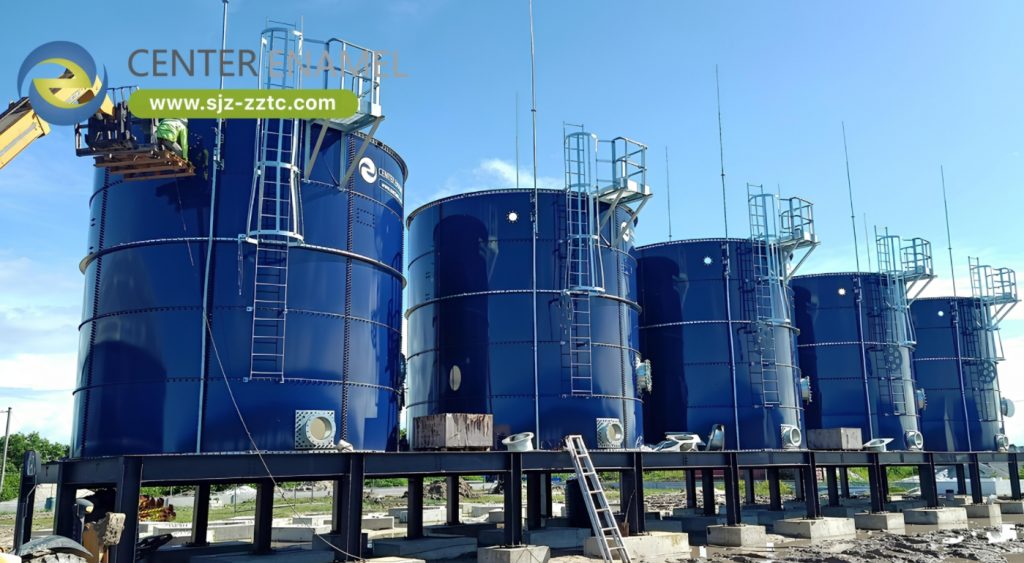Treat Aquaculture Wastewater Effectively with UASB Anaerobic Reactors | Center Enamel

The aquaculture industry, while essential for global food production, faces significant challenges in managing wastewater rich in organic matter, suspended solids, and nutrients. Effective wastewater treatment is crucial not only to protect the surrounding environment but also to ensure the sustainability of aquaculture operations. Center Enamel offers advanced Upflow Anaerobic Sludge Blanket (UASB) reactors—an innovative solution designed to treat aquaculture wastewater efficiently and cost-effectively.
Aquaculture facilities produce wastewater that contains a complex mix of organic matter, nitrogen, phosphorus, and suspended particles. If left untreated, these pollutants can lead to eutrophication in receiving water bodies, adversely affecting aquatic ecosystems and human health. Traditional wastewater treatment methods may not be economically viable or sustainable for the variable and often high-strength nature of aquaculture effluent.
In this context, UASB reactors offer a promising alternative. Their ability to handle fluctuating loads, coupled with low energy and sludge disposal costs, makes them an ideal technology for the aquaculture industry.
UASB reactors represent a mature and robust technology widely used for the treatment of high-strength wastewater. In these systems, wastewater flows upward through a dense layer of anaerobic granular sludge, where microorganisms degrade organic pollutants. This process results in significant reductions in Chemical Oxygen Demand (COD) and Biochemical Oxygen Demand (BOD), while simultaneously generating biogas as a valuable by-product.
The unique design of UASB reactors provides several advantages for aquaculture wastewater treatment:
- High Treatment Efficiency: UASB reactors are capable of achieving substantial COD removal, even under varying organic load conditions.
- Low Energy Requirements: Operating under anaerobic conditions minimizes the need for aeration, reducing energy consumption compared to aerobic systems.
- Biogas Production: The anaerobic digestion process produces biogas, which can be captured and utilized as an alternative energy source, offsetting operational costs.
- Reduced Sludge Production: The granular sludge system generates less excess sludge, thereby lowering the costs and environmental impact associated with sludge disposal.
Key Benefits of UASB Reactors in Aquaculture
1. Efficient Organic Matter Degradation
The anaerobic digestion process in UASB reactors is highly effective in breaking down organic compounds present in aquaculture wastewater. This leads to a significant reduction in COD and BOD levels, ensuring that the effluent discharged into the environment meets stringent regulatory standards.
2. Sustainable Energy Production
One of the most attractive features of UASB reactors is their capacity to produce biogas during the treatment process. This renewable energy source can be harnessed to generate electricity or heat, contributing to the overall sustainability of the aquaculture operation and reducing reliance on external energy sources.
3. Lower Operational Costs
Compared to conventional aerobic treatment systems, UASB reactors require lower energy inputs due to the absence of aeration. Additionally, the reduced sludge production translates into lower handling and disposal costs, enhancing the economic viability of wastewater treatment in aquaculture facilities.
4. Scalability and Flexibility
UASB reactor systems are highly scalable, making them suitable for a wide range of aquaculture operations—from small, localized farms to large, integrated production facilities. Their flexible design allows for easy integration with other treatment processes, enabling operators to tailor the system to their specific effluent characteristics and regulatory requirements.
5. Minimal Footprint
The compact design of UASB reactors is particularly beneficial in aquaculture settings where space is often at a premium. Their vertical configuration and high treatment efficiency mean that effective wastewater management can be achieved within a limited area.
Integrating UASB Reactors into Aquaculture Operations
For aquaculture facilities, successful implementation of UASB technology requires careful consideration of several factors:
- Influent Characteristics: The composition of the wastewater, including organic load, suspended solids, and nutrient levels, must be thoroughly evaluated to design a UASB system that meets the specific needs of the facility.
- Hydraulic Retention Time (HRT): Optimal HRT is crucial for ensuring complete anaerobic digestion. Adjustments in reactor design can be made to accommodate variations in wastewater flow and load.
- Temperature Control: As with most biological processes, the efficiency of anaerobic digestion in UASB reactors is influenced by temperature. Maintaining appropriate operating temperatures is essential for sustaining microbial activity and ensuring consistent biogas production.
- Post-Treatment Options: Although UASB reactors are highly effective in reducing organic load, additional treatment steps, such as sedimentation or filtration, may be necessary to achieve the desired effluent quality for discharge or reuse.
Center Enamel’s Commitment to Innovation and Sustainability
At Center Enamel, we recognize the importance of sustainable wastewater management in the aquaculture industry. Our UASB anaerobic reactors are designed with precision engineering and built to endure the challenging conditions typical of high-strength wastewater treatment. With decades of experience in the design and manufacture of advanced storage and treatment systems, we provide solutions that are both technically robust and economically viable.
Our commitment to quality is reflected in every stage of the design and production process. We offer customizable UASB reactor solutions that can be tailored to meet the unique requirements of aquaculture operations, ensuring optimal performance, regulatory compliance, and environmental sustainability.
Center Enamel’s UASB anaerobic reactors offer a state-of-the-art solution for reducing organic pollutants, generating renewable energy, and lowering operational costs. By integrating our UASB technology into your wastewater management strategy, aquaculture operators can achieve significant environmental and economic benefits, ensuring a more sustainable and resilient future for the industry.
For further information on how our UASB reactor solutions can enhance the efficiency and sustainability of your aquaculture operations, please contact Center Enamel.
